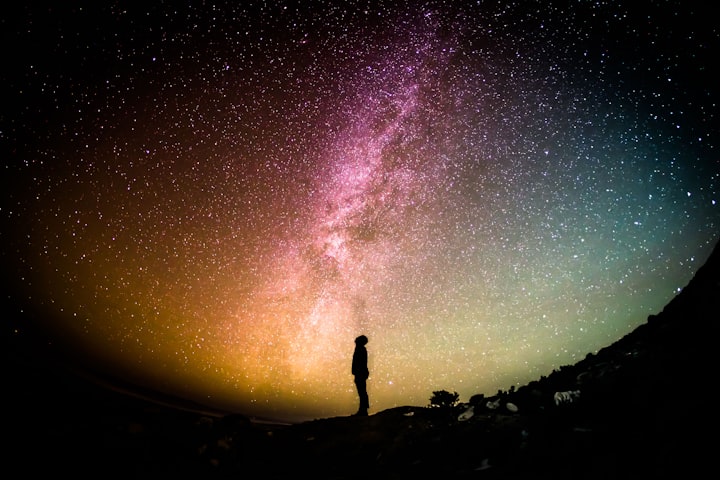"Technological Leap: Unlocking the Mysteries of Dreams"
unlocking the mysteries of Dreams

The enigma of dreams has captivated humanity for millennia, leading us down a fascinating path of psychological exploration and introspection. However, it is the technological advancements of recent decades that have truly amplified our understanding of this nocturnal phenomenon.
Technology's intersection with the science of dreams has revolutionized our approach, leading to extraordinary insights into the intricate maze of our subconscious. This article explores the breakthrough technologies that have paved the way in dream science, shining a light on one of the most elusive aspects of the human experience.
Firstly, let's discuss polysomnography. This tool has long been the bedrock of sleep studies. Polysomnography tracks brain waves, eye movements, and body activity during sleep, enabling scientists to segregate and analyze different stages of sleep. This technology has been crucial in identifying the REM (Rapid Eye Movement) stage, where the most vivid dreams occur, thus helping us decipher the architecture of dreams.
Then came the advent of neuroimaging technologies like fMRI (functional Magnetic Resonance Imaging) and PET (Positron Emission Tomography) scans. These have taken our understanding of dreams a step further, allowing us to visualize the regions of the brain that light up during dreams. The analysis of neural activity during sleep has opened up new dialogues about the correlation between dream content and brain function.
One of the most revolutionary developments in dream science has been the advent of 'dream decoding' technology. Using machine learning algorithms, researchers can now roughly reconstruct dream visuals. In one groundbreaking study, researchers at Kyoto University in Japan successfully correlated subjects' brain patterns during sleep with images from a database, providing a primitive 'reading' of their dreams. This could be a precursor to more advanced dream interpretation in the future.
Further, technology has ventured into the realm of dream control too. Gadgets like lucid dreaming masks use subtle light cues to signal to dreamers that they're in a dream, fostering the ability to become aware and take control of one's dreams. This method, known as lucid dreaming, opens a new frontier for potential therapeutic interventions.
Finally, the rise of AI and machine learning offers tantalizing possibilities. Could we use AI models like ChatGPT to analyze and provide insights into our dreams, based on shared dream data? Could these technologies serve as a digital dream diary and interpreter? Only time will tell.
In conclusion, the marriage of technology and dream science has transformed our understanding of this captivating human phenomenon. The technological leaps we've made, from polysomnography to AI, are enabling us to unlock the mysteries of our dreams like never before. As we delve deeper into the realm of dreams with the help of technology, who knows what other secrets we might unveil?
Our exploration of the relationship between dreams and technology would be incomplete without touching upon the emerging field of digital therapeutics in dream research. Technological applications designed to influence dream content for therapeutic purposes are being developed, with the potential to revolutionize mental health treatment.
The integration of biofeedback technology into sleep therapy is an exciting development in this space. Biofeedback devices allow individuals to monitor their physiological states during sleep, such as heart rate variability, thereby helping them manage stress and anxiety which often manifests in dreams.
Meanwhile, other technologies are paving the way for 'targeted dream incubation', a technique aiming to guide dream content for therapeutic ends. For instance, Dormio, a device developed by MIT researchers, exploits the hypnagogic state - the transitional state from wakefulness to sleep. The device detects this sleep stage and delivers audio prompts to influence dream direction, potentially allowing for the treatment of conditions such as PTSD through targeted dream therapy.
Moreover, the blossoming field of virtual reality (VR) promises another avenue to interact with our dreams. VR has the potential to mimic dream-like experiences while awake, enabling scientists to study complex dream dynamics in a controlled environment. This could unlock a deeper understanding of the causes, mechanisms, and implications of our dream experiences.
And yet, the rapid technological advancement in dream research raises important ethical questions too. As we develop the ability to decode, influence, and potentially share dreams, concerns about privacy and psychological safety need to be carefully considered.
In a sense, technology has offered us a ticket to the previously inaccessible theatre of our subconscious mind, allowing us to observe, study, and interact with our dreams like never before. As we continue to push the boundaries of dream science with technology, we must navigate this intricate labyrinth with care, ensuring that our newfound capabilities are utilized for the betterment of human understanding and well-being.
About the Creator
Aida Josephine
A mother of two beautiful children. Born with a creative spark in her soul,I always found joy in the realm of writing and digital design. My passion for creativity fills my days with color, inspiration, and endless possibilities.






Comments
There are no comments for this story
Be the first to respond and start the conversation.